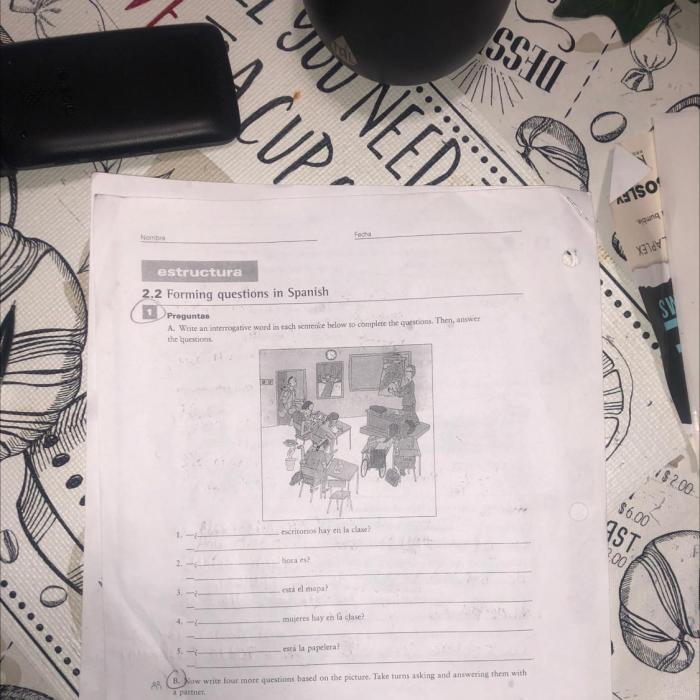Estructura 2.2 forming questions in spanish – Welcome to the realm of Spanish question formation, where clarity and precision are paramount. Embark on an enlightening journey with us as we delve into the intricacies of Estructura 2.2, a cornerstone of Spanish grammar that empowers you to ask questions effectively.
Throughout this discourse, we will unveil the different types of questions, unravel the rules governing their formation, and explore the significance of intonation in conveying meaning. Moreover, we will delve into the practical application of question tags and showcase how questions are employed in everyday conversations.
1. Forming Questions in Spanish: Estructura 2.2 Forming Questions In Spanish

In Spanish, there are several types of questions, including general questions, specific questions, yes/no questions, and wh-questions. General questions ask about a general topic, while specific questions ask for specific information. Yes/no questions ask for a yes or no answer, and wh-questions ask for specific information using question words such as quién (who), qué (what), dónde (where), cuándo (when), and por qué (why).
Question Formation Rules, Estructura 2.2 forming questions in spanish
Questions in Spanish are formed by inverting the subject and verb. For example, in the sentence “El niño come manzanas” (The boy eats apples), the question “Come el niño manzanas?” (Does the boy eat apples?) is formed by inverting the subject “el niño” and the verb “come”.
In addition, question words are placed at the beginning of the question.
Question Intonation
Intonation is important in Spanish questions. General questions have a rising intonation at the end, while specific questions have a falling intonation. Yes/no questions have a rising intonation at the beginning, and wh-questions have a falling intonation at the end.
Using Question Tags
Question tags are short phrases that are added to the end of a statement to turn it into a question. The most common question tags in Spanish are “¿verdad?” (right?) and “¿no?” (no?). Question tags are used to confirm or deny information.
Asking Questions in Context
Questions are an important part of everyday conversation in Spanish. They are used to ask for information, to clarify information, and to show interest in a topic. The way that questions are asked can vary depending on the context.
Questions Often Asked
What are the different types of questions in Spanish?
Spanish questions can be classified into general, specific, yes/no, and wh-questions, each serving a distinct purpose in communication.
How do I form questions using subject pronouns and verb conjugation?
In Spanish, questions are formed by inverting the subject pronoun and the verb, ensuring agreement in person and number.
What is the significance of intonation in Spanish questions?
Intonation plays a crucial role in conveying the type and intent of a question. Different intonation patterns signal whether a question is general, specific, or seeking confirmation.
When should I use question tags in Spanish?
Question tags, such as “¿verdad?” and “¿no?”, are used to seek confirmation or agreement from the listener, adding a conversational tone to the question.
How do I ask questions appropriately in different social situations?
Asking questions in Spanish involves cultural considerations. Understanding the appropriate tone and level of formality is essential for effective communication.


